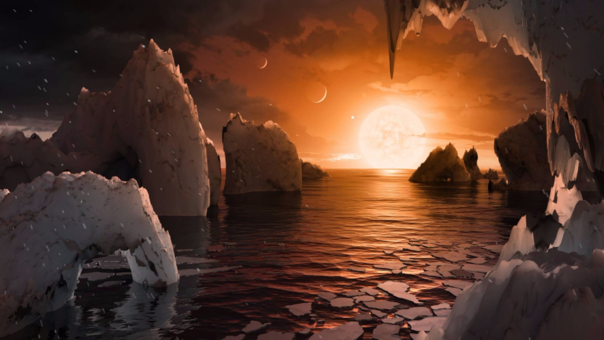Yesterday, NASA announced that they will be announcing something big about the discovery beyond our Solar System. Now, this alone enticed many as to what big and major can be revealed beyond a system where we reside.
At around 1 p.m EST, Wednesday, NASA held a news conference in which they broke out the news of the discovery of seven Earth-sized exoplanets which might be able to sustain life. These seven planets are said to be orbiting an ultra-cool dwarf star named Trappist-1, 39 light years away or 235 trillion miles. This is the first time that the astronomers were able to detect so many terrestrial planets orbiting a single star. The distance between these planets and the Earth is considered to be quite close in cosmic terms, which means that they can be studied in great details.

Lead researcher Michael Gillion, with the University of Liege in Belgium, said that these planets could have some liquid water and maybe even life on them. The finding of these planets is said to be a crucial step in the discovery of life outside our planet.
Around a nearby, cold, small star we found 7 rocky Earth-size planets, all of which could have liquid water – key to life as we know it. pic.twitter.com/C2JWjDfBdK
— NASA (@NASA) February 22, 2017
The astronomers have also published a study journal in which detailed accounts of the discovery are given for the people. In the study it is claimed that six of the seven planets discovered, are likely rocky i.e made up of rocks and metal which is similar to planets like Mercury, Earth, Venus and Mars. And, apart from being Earth-like, these planets are also said to have densities in the vicinity of Earth’s.
As per the astronomers, they have to study the atmosphere before determining and accurately claiming of whether these planets support life or not. In order to scan planets for water, ozone, methane and other chemicals, another generation of telescopes is required including James Webb Space Telescope, which is said to launch next year.
23rd February 2017
Jyotsna Amla


